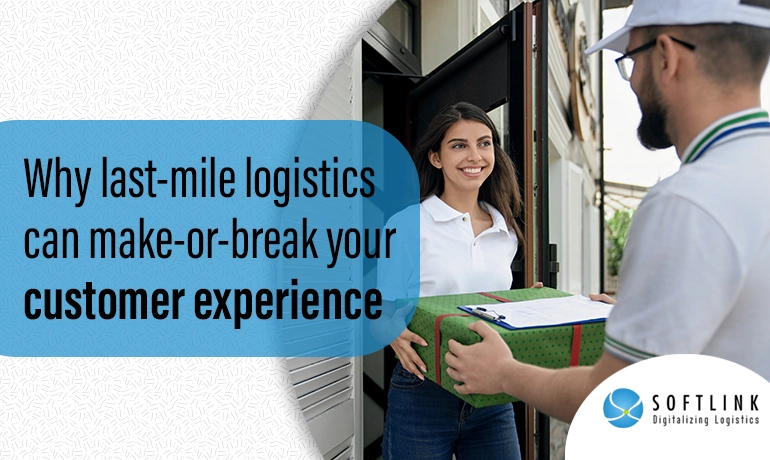- By Softlink Global
- November 23, 2022
- Logistics
Last-mile delivery can be a make-or-break activity for logistics service providers. Its high importance is because it is the touchpoint between you and your end consumer.
Last-mile delivery costs about 53% of the total delivery costs
The smaller the promised delivery time, the larger the costs associated that eat into your profits. Depending on the delivery time windows, last-mile delivery costs can increase two to four times.
In the digital age, e-commerce is booming, and businesses are scrambling to find ways to keep up with demand. Today, customers expect information at their fingertips and orders shipped immediately — not in three to seven business days as was common before.
Customers associate timely deliveries with brand loyalty. But the tricky part is you can’t burden your customers with last-mile costs. So how do you maintain the balance of giving the customers what they demand and yet remain profitable? Let’s start by knowing more about the customer.
What constitutes a customer's positive delivery experience
- Speed and quality of delivery
If you promise your customer their cargo is arriving on Wednesday and arrives in a damaged condition on Saturday, it’s frustrating and can lead to customer churn. Last-mile delivery is about fulfilling the promise made. Intact and timely delivery forges customers’ trust in your commitment.
- Visibility and control
Customers don’t like surprises unless they’re pleasant ones. GPS-based tracking for the final delivery gives your customers a sense of control, establishing transparency in your relationship. If your deliveries have been majorly on time and say an instance a delayed delivery. Instant communication with the customer about the delay will still help keep their trust.
Learn more from our experts how you can digitalize your freight forwarding & logistics business.
Common reasons for untimely last-mile delivery
There are many reasons why a package or shipment may be late in reaching its destination. The shipment got stuck in the wrong customs area, incorrect address, had inclement weather or even stolen. The last-mile logistics (LML), or final leg of delivery, is where these scenarios get dicey.
- Lack of coordination between teams
- Inefficient planning with available resources
- Insufficient route planning
- Lack of technology adoption
A good customer experience can go beyond just tracking your cargo or shipments. Technologies like IoT and temperature sensors can also help in knowing if tampered with along the way.
How to optimize your last-mile delivery for improved customer experience
Last-mile delivery offers the final link in a customer’s purchasing journey. With advancements in last-mile delivery optimization and clever use of new technology, companies today can get insights into logistics data to better understand and address customer needs. Adopting technology should give you visibility of every step of the progress from pick-up to delivery. Logistics ERP comes with built-in to provide progress monitoring and route optimization. You can take quick measures for fixing possible delays sooner with an early warning intimation for any:
- bottlenecks
- traffic congestion in high-density areas
- construction closures
- availability of each customer at certain times
Timely hand-offs ensure consistent meeting cut-offs and ETA, leading to customer satisfaction.
Take away
Logistics is an important segment affecting customer experience. You could do everything right till the delivery and one slip could ruin your reputation. It’s about consistently meeting your customer’s expectations while keeping your company profitable too. Last-mile delivery may be important but it relies on every step right from booking to getting it right. Technology is your best help to achieve intact, timely deliveries while providing the best possible customer experience.


